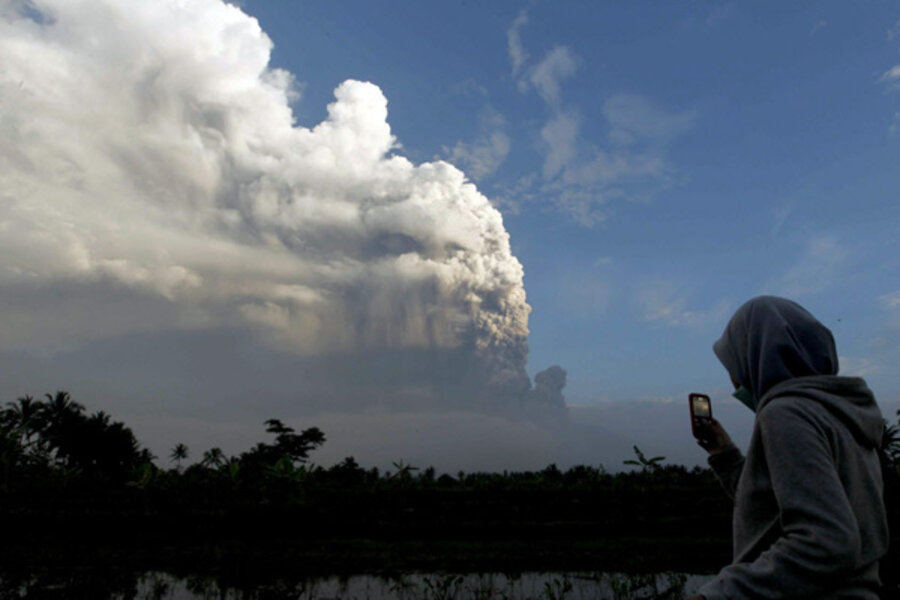Mount Merapi erupts again: why locals don't leave
Loading...
Indonesia's Mt. Merapi volcano continues to erupt on Java. Merapi's most powerful eruption in its latest bout of activity came Wednesday, leading the government to expand the exclusion zone around the mountain from 10 kilometers to 15 kilometers (nine miles) and forcing some temporary shelters to close. That prompted a second exodus for area residents already fretting about the safety of their homes and crops.
Today, Merapi continues to spew clouds of ash and noxious gases, with bits of volcanic debris reaching as far as Yogyakarta, 20 miles away. Yogyakarta (pronounced "joke-jakarta") is the region's largest city and was home to an ancient sultanate of the same name. The volcano has major eruptions every five years or so, and in 2006 an earthquake caused by the same geological forces that drive Merapi killed thousands and left more than 100,000 people homeless in and around the city.
For people unfamiliar with the region and its history, a common and reasonable question asked during such a major series of eruptions is: "Why do people live so close to such a predictably dangerous volcano?"
The simple answer is that for all the spectacular pictures of ash blooms and pyroclastic flows pouring down Merapi's slopes, and the stories of Indonesian villagers fleeing their homes and fields with little more than the clothes on their backs, volcanoes like Merapi have been among Indonesia's greatest givers of life and a focal point for some of the greatest material cultures in early human history.
The rich soils allowed for settled agriculture and food surpluses that, in turn, allowed to the specialization of artists, bureaucrats, and other workers who created ancient Java's temples and culture.
They feed the soil that makes Java one of the most population-dense places on earth. Roughly 140 million people live on 53,000 square miles, about 2,600 people per square mile. New Zealand's slightly larger South Island is home to just 1 million people, or about 18 per square mile.
Why the difference? Agricultural productivity is a direct result of volcanoes like Merapi. The short-term destruction of eruptions like the one now is more than outweighed by the long-term benefits of the nutrients that ash falls bring to soils. The string of volcanoes on Java and nearby Bali, coupled with abundant rainfall, make them some of the most agriculturally productive spots in the world. The impact that productivity has on human density and culture is understood by looking at some of the large Indonesian islands without volcanoes.
Indonesia controls about two-thirds of Borneo, the third-largest island on earth. Just north of Java, it lies beyond the major subduction zone that creates Indonesia's arc of volcanoes, and its soils are dramatically poorer for agriculture. Five times larger than Java, it holds a sixth as many people. And its traditional cultures relied on hunting and gathering, with only rare pockets of settled agriculture.
Java, by contrast, had early kingdoms with advanced bureaucracies and major monuments. The Mataram Kingdom between the 8th and 10th centuries built the sprawling Hindu temple complex at Prambanan, and an earlier kingdom in the same area built Borobudur, a Buddhist monument. Both are World Heritage sites and both are near Merapi. Both sites were later abandoned, as later Javanese kingdoms converted to Islam. In the 19th century, both were "rediscovered" and restored by Europeans. They were overgrown with lush jungle and largely buried by volcanic ash, another legacy of Merapi.





